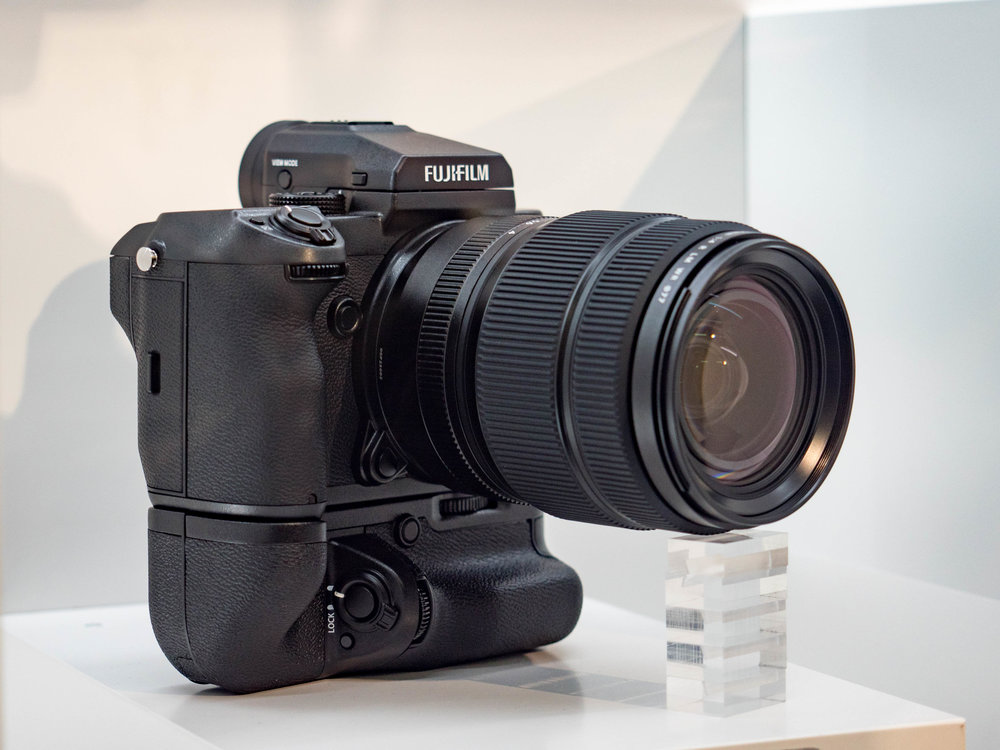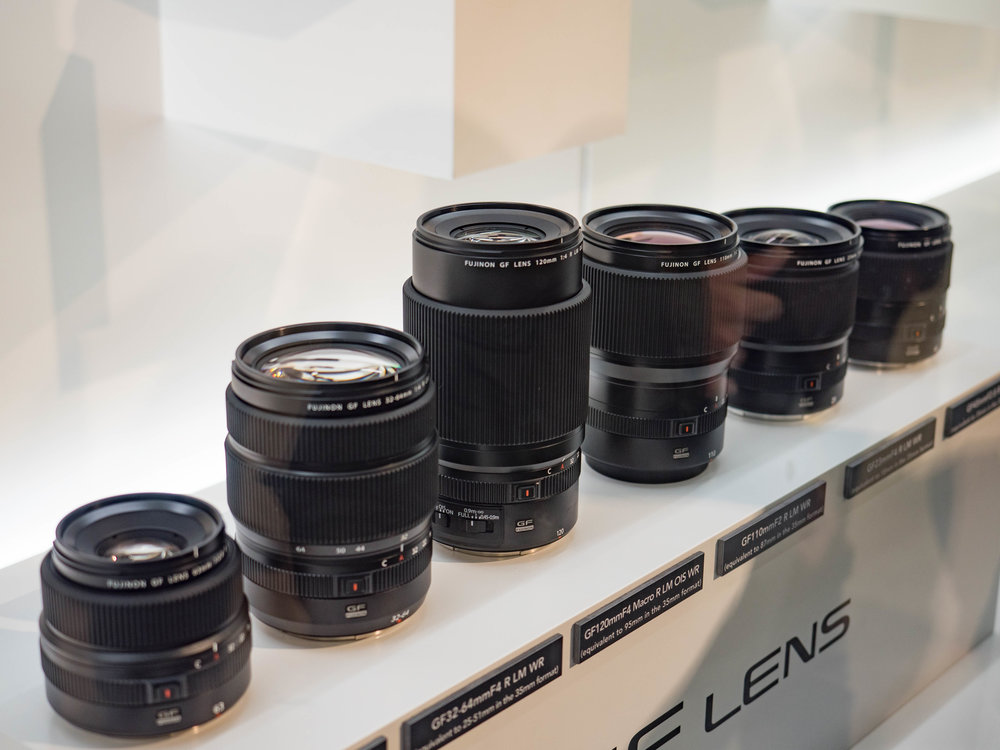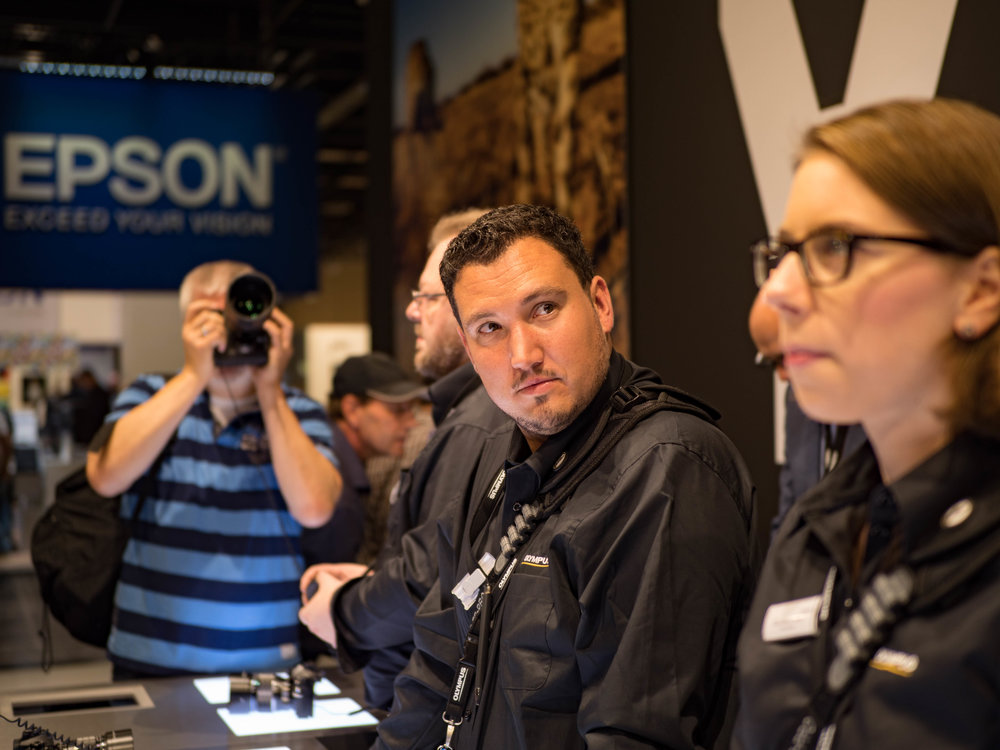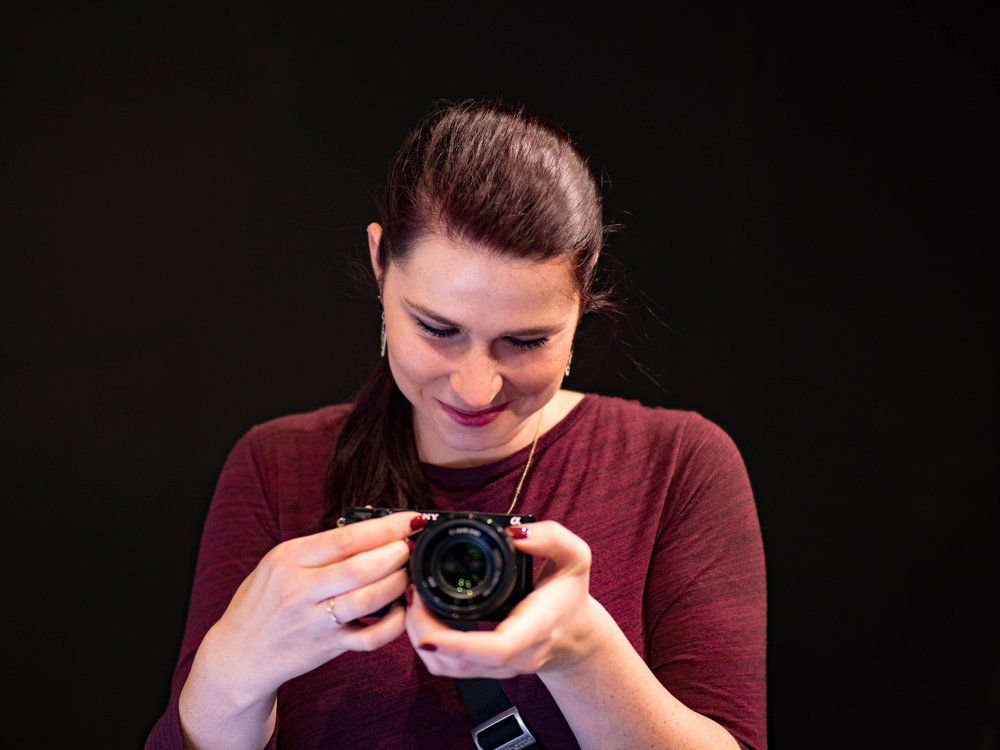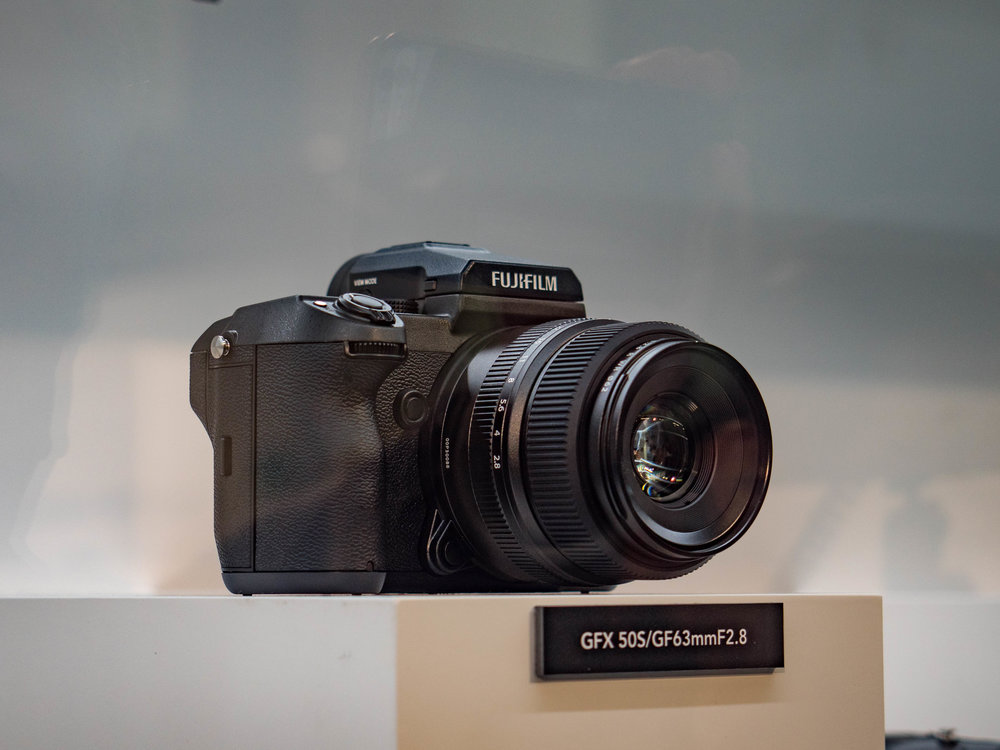
After yesterday’s flurry of announcements, today at Photokina was something of an anticlimax. It was a public day, even though a majority of press visitors were expected. As a result it was crowded and I had to fight to get near to the latest gear.
For today I concentrated my attentions on the four manufacturers who have our attention here at Macfilos—Leica, Fuji,Panasonic, Olympus. To this I added Hasselblad because of the new full-frame digital.
Disappointingly, neither the white-hot Fuji GFX nor the upgraded OM-D E-M1 Mk II were available for grubby fingers to poke, not even for press fingers. Both were safe behind glass. This wasn’t so much a problem with the Olympus, which is generally a known quantity, but it was with the Fuji. Without getting it in the hands it is impossible gain an impression of the camera. All I could do was grab a through-the-glass shot of two. A guy on the service counter vouchsafed that the reason the GFX wasn’t there to prod was that is wasn’t get “fertig”, ready. It looks unlikely that we will be seeing production models until early 2017.
This wasn’t the case on the Hasselblad stand where the X1D, now in direct competition with the Fuji, was in relatively plentiful supply for prodding and holding, albeit under the supervision of the enthusiastic demo team. I commented on the coincidence of two rather similar medium-format cameras being announced in short order. I can see no real resemblance between the Hasselblad and the Fuji, nor is there a common thread in the lens lineup; the Fuji lenses have physical aperture rings where the ‘Blad lenses do not.
The Hasselblad representative told me that the sensors in the X1D and GFX are the same but that the cameras are very different beasts. One positive aspect of the Hasselblad lineup is that the lenses are not ridiculously expensive, with the standard 50mm-equivalent prime coming in at 1,900 euros. This compares with Leica’s new 50mm Summilux for the smaller-sensor SL which is priced north of four thousand.
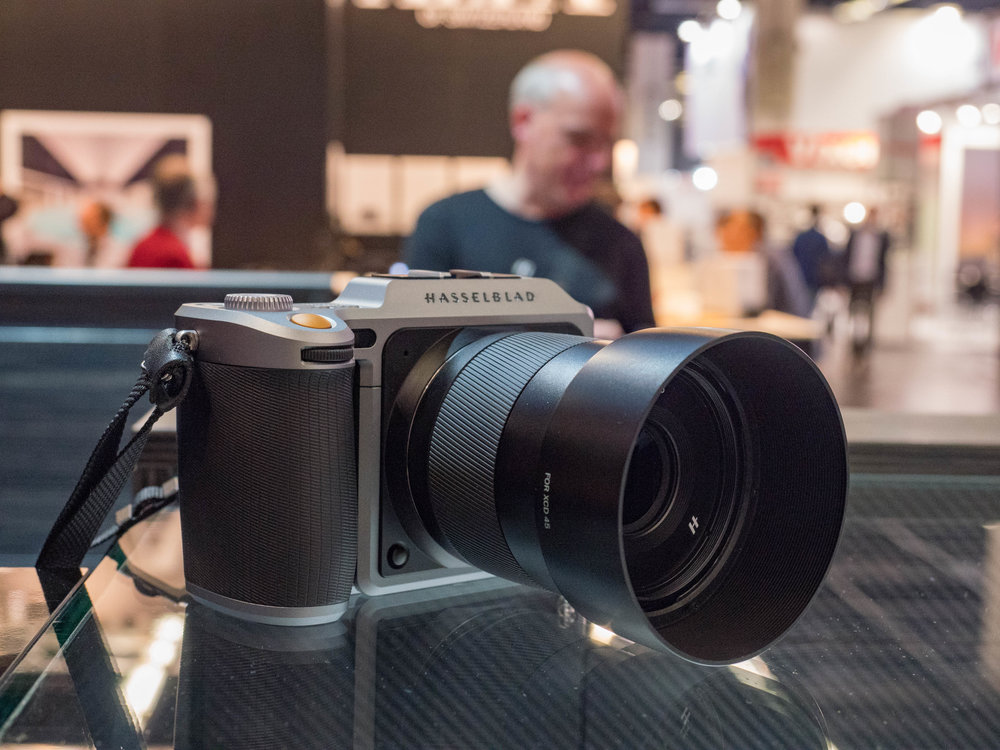
There are no firm Fuji prices, except the confirmation that the GFX with the standard 63mm prime will cost “well under $10,000” which is around €9,000 or £7,700. By comparison, Leica’s full-frame SL with the new 50mm Summilux costs around £9,000. The Leica S range, with medium-format sensor to compare with the X1 and GFX is considerably more expensive.
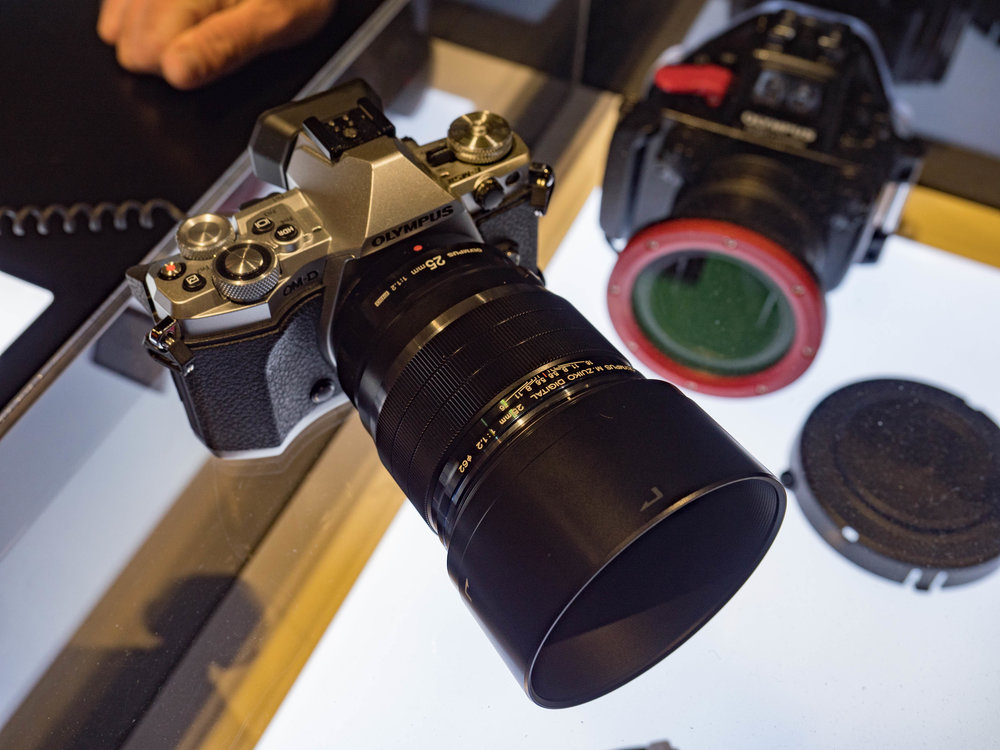
In the Olympus line-up, apart from the in-a-glass-box OM-D E-M1 Mk II, main interest settles on the f/1.2 25mm Pro lens. This, again, is equivalent to that “standard” fifty which is something of a benchmark. I spent some time with this lens and mounted it on the GX8. It is large, larger and heavier than the Pro 12-40 zoom which I had with me at the time. In terms of styling and ergonomics it is identical to the 12-40 and the other lenses in the Olympus Pro lineup, right down to the focus clutch which reveals a depth-of-field scale when pulled into manual mode.
With a wide aperture of f/1.2, this lens should lens to provide more subject isolation than I saw in the few test shots, admittedly taken in difficult conditions on the stand. I did a quick comparison with the 12-40 at f/2.8 and was surprised how similar they looked. I look forward to getting my hands on the Olympus f/1.2 to give it a full review.
This lens become one of the fastest in the m4/3 arsenal and will undoubtedly be popular, even at the estimated price of “around €1,000”. It goes head to head with Panasonic’s 25mm f/1.4 which, despite being rather elderly by now, is still a fabulous optic.
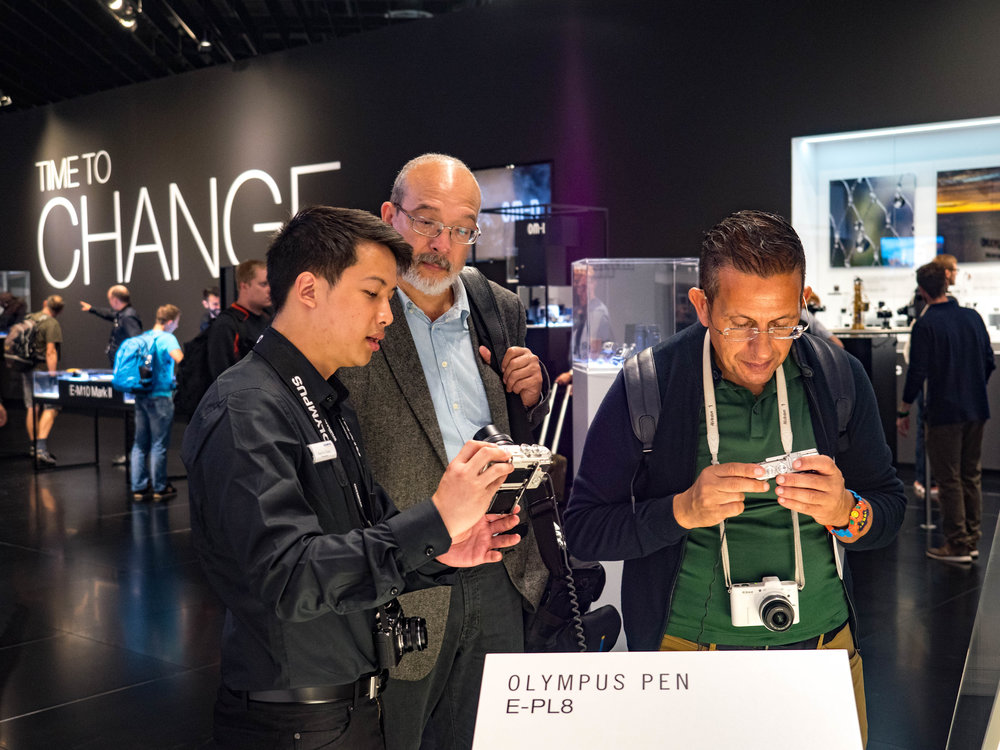
Interestingly, Fujifilm, Olympus and Panasonic all have a massive presence at Photokina. Panasonic’s stand is so large that it shares one complete hall with Canon. Leica, on the other hand, has pulled back this for 2016. Instead of occupying the whole of Hall 1, plus a smaller stand in the main exhibition—as was the case in 2014—the main focus of activity this year is on the stand. Only one side, with a demonstration counter, is available to the public. The main body of the stand is restricted to access for “professionals” which tends to create a rather elitist view for the average showgoer.
However, Leica does have a massive presence back in Hall 1 which is occupied by a huge Leica Gallery of photographs from the company’s favourite photographers. It’s an impressive show. There’s also a theatre area which was out of action during my visit. Last year’s involvement was on a more massive scale.
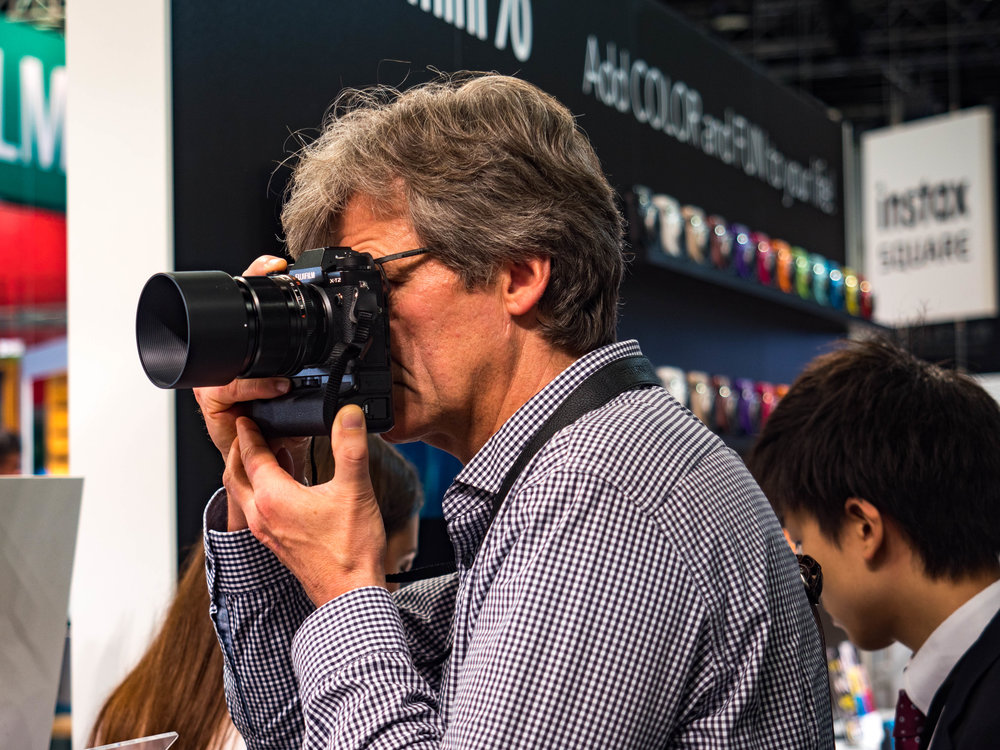
This relative pull back in Photokina activities is reflected in the lack of new product announcement (other than the M-P Titanium Edition and the 50mm Summilux SL which were announced before the exhibition). Not a sign of the rumoured Leica TL, nor of the retro 28mm f/5.6 Summaron-M lens that had been strongly tipped for debut.
I get the impression that some products were not quite ready and could be announced before the end of the year. As one Leica representative pointed out, show launches always run the risk of being overwhelmed by the sheer number of new products arriving at the same time. It’s often better to have an independent launch and a time of the factory’s own choosing.
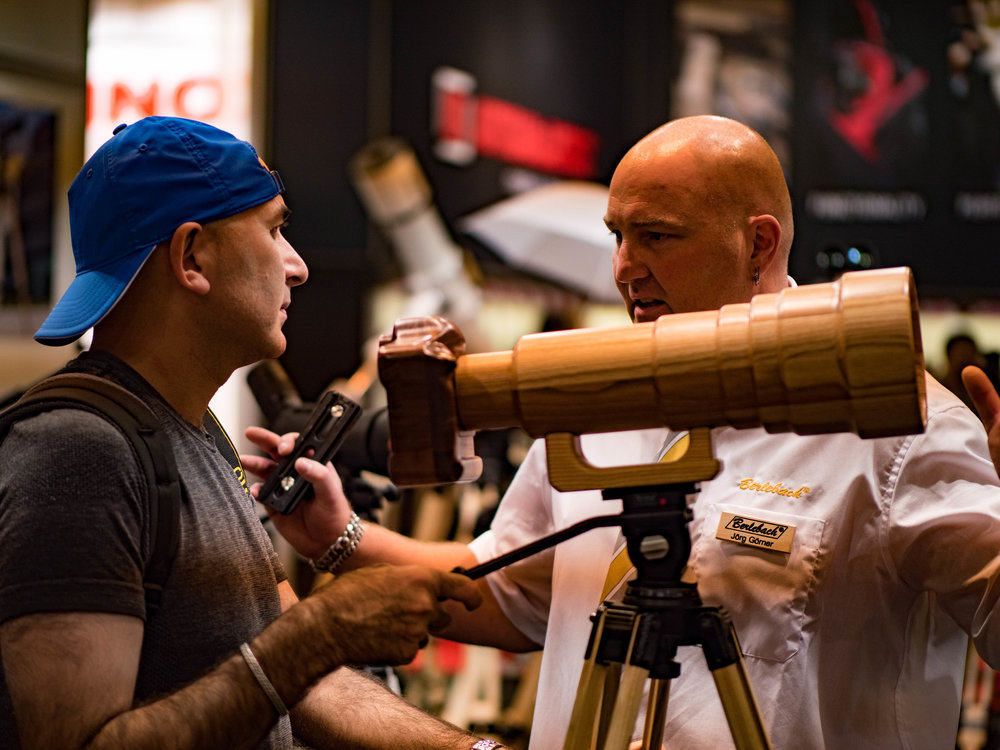
Finally I went to over to Panasonic to have a hands on with the new LX15 which the stand guy described as the “little sister” of the LX100/Leica D-Lux. Certainly, putting them side by side, there is a strong resemblance and the size difference is greater than I had imagined. The LX15 is very much a competitor for the Sony RX100 range and the Canon G7 X, very similar in size and scope. I like it immensely and, since I have an urge to buy one of these 1-in sensor midgets it will be a hard choice.
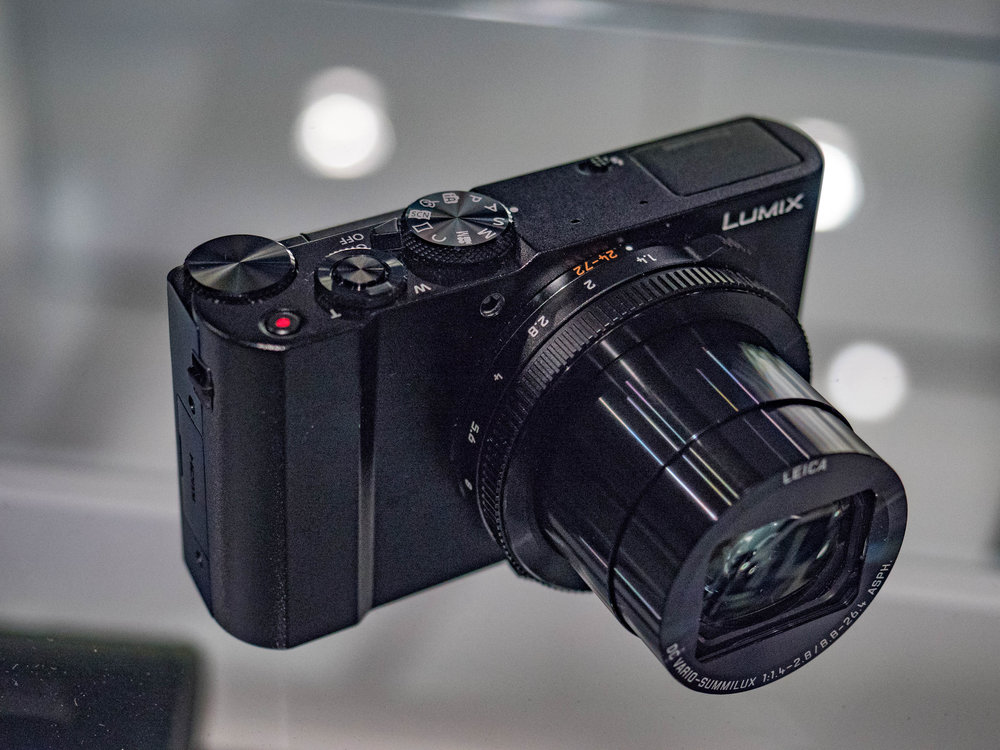
As with the Canon, the LX15 has no viewfinder (nor accessory shoe) but the Panasonic, at 24-72mm, has a narrower focal length range than the Canon at 24-100. The Sony’s range is more or less identical to that of the Lumix (24-70mm) and the camera benefits from a pop-up electronic viewfinder.
Both the Sony and the Canon have bright f/1.8-2.8 lenses but the new Panasonic goes one stop better with its Leica DC Vario-Summilux f/1.4-2.8 zoom.
The all-metal LX15 is an impressive addition to the range and will be popular as a pants-pocket compact for many experienced photographers. It will be very interesting to see if Leica will re-brand this camera. They ought to. It has the right DNA, including the Leica lens, and I am sure it would sell well.
Now for Day Two.
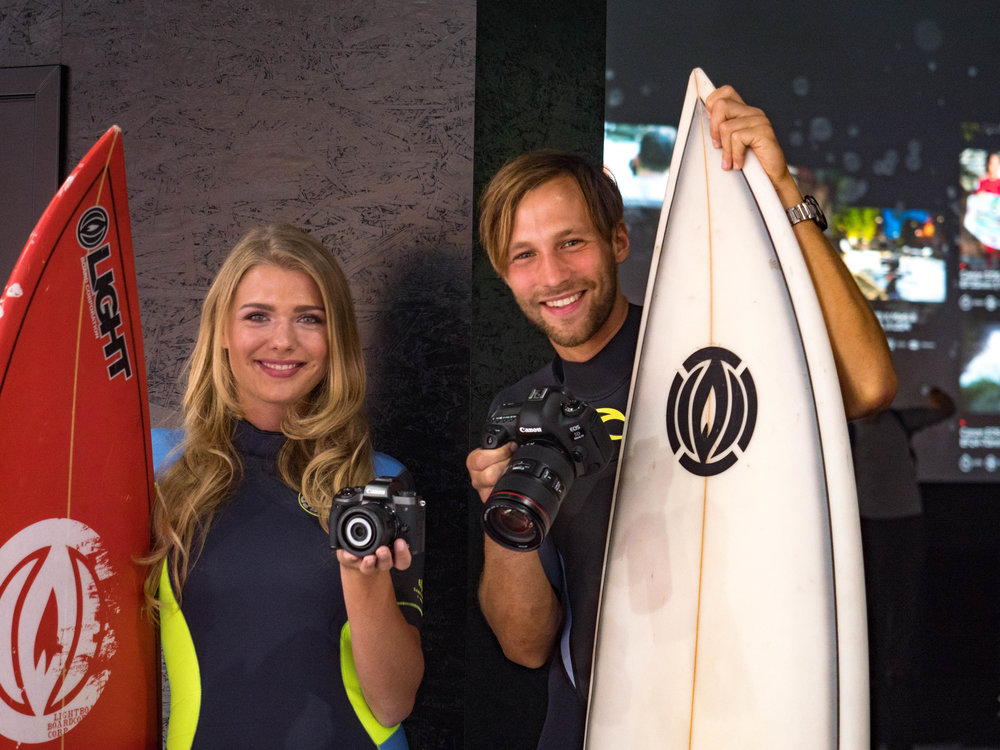
__________
- Subscribe to Macfilos for free updates on articles as they are published. Read more here
- Want to make a comment on this article but having problems? Please read this

